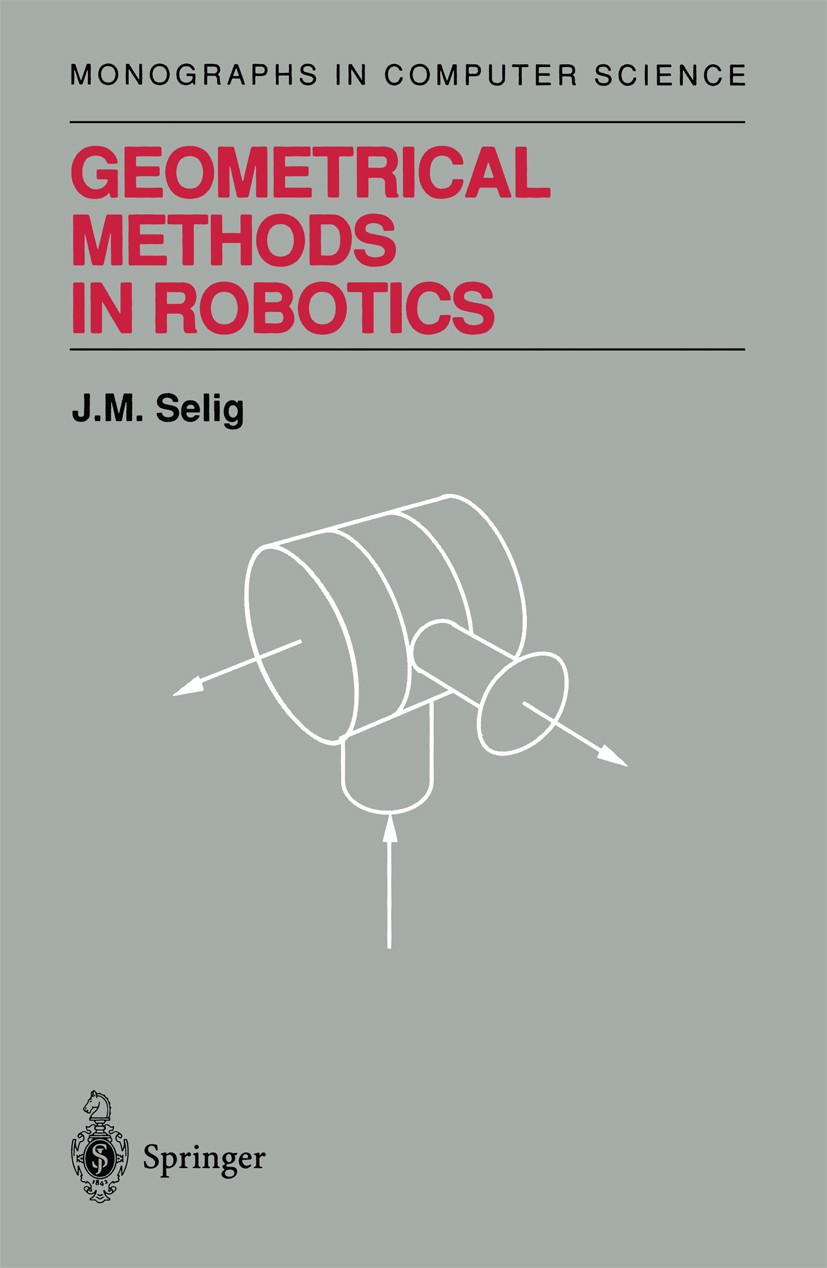| 书目名称 | Geometrical Methods in Robotics | | 编辑 | J. M. Selig | | 视频video | http://file.papertrans.cn/384/383657/383657.mp4 | | 丛书名称 | Monographs in Computer Science | | 图书封面 |  | | 描述 | The main aim of this book is to introduce Lie groups and allied algebraic and geometric concepts to a robotics audience. These topics seem to be quite fashionable at the moment, but most of the robotics books that touch on these topics tend to treat Lie groups as little more than a fancy notation. I hope to show the power and elegance of these methods as they apply to problems in robotics. A subsidiary aim of the book is to reintroduce some old ideas by describing them in modem notation, particularly Study‘s Quadric-a description of the group of rigid motions in three dimensions as an algebraic variety (well, actually an open subset in an algebraic variety)-as well as some of the less well known aspects of Ball‘s theory of screws. In the first four chapters, a careful exposition of the theory of Lie groups and their Lie algebras is given. Except for the simplest examples, all examples used to illustrate these ideas are taken from robotics. So, unlike most standard texts on Lie groups, emphasis is placed on a group that is not semi-simple-the group of proper Euclidean motions in three dimensions. In particular, the continuous subgroups of this group are found, and the elements of it | | 出版日期 | Textbook 19961st edition | | 关键词 | Grad; computing; differential geometry; engineering; kinematics; mathematics; robot; robotics | | 版次 | 1 | | doi | https://doi.org/10.1007/978-1-4757-2484-4 | | isbn_ebook | 978-1-4757-2484-4Series ISSN 0172-603X Series E-ISSN 2512-5486 | | issn_series | 0172-603X | | copyright | Springer Science+Business Media New York 1996 |
The information of publication is updating

|
|
 |Archiver|手机版|小黑屋|
派博传思国际
( 京公网安备110108008328)
GMT+8, 2025-12-17 15:39
|Archiver|手机版|小黑屋|
派博传思国际
( 京公网安备110108008328)
GMT+8, 2025-12-17 15:39


